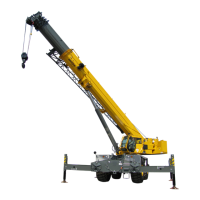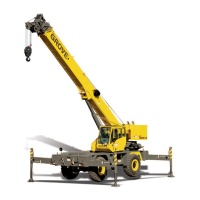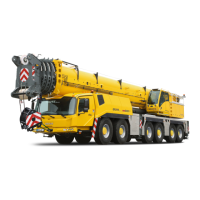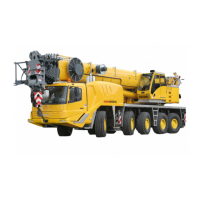SET-UP AND INSTALLATION RT770E OPERATOR MANUAL
4-4 Published 04-04-2017, Control # 446-09
3. Make sure the live-loaded side (Figure 4-6) of the rope is
directly in line with the ears of the socket and the
direction of pull to which the rope will be subjected. If the
rope is loaded into the socket incorrectly, under a load
the rope will bend as it leaves the socket, and the edge
of the socket will wear into the rope causing damage to
the rope and eventual failure.
4. Insert the end of a wire rope into the socket, form a loop
in the rope, and route the rope back through the socket
allowing the “dead” end to protrude from the socket.
Ensure the dead end of the rope is of sufficient length to
apply end treatment to the dead end after the wedge has
been seated.
5. Insert the wedge into the loop and pull the live end of the
rope until the wedge and rope are snug inside the
socket. It is recommended that the wedge be seated
inside the socket to properly secure the wire rope by
using the crane’s hoist to first apply a light load to the live
line.
6. After final pin connections are made, increase the loads
gradually until the wedge is properly seated.
7. The wire rope and wedge must be properly secured
inside the socket before placing the crane into lifting
service. It is the wedge that secures the wire rope inside
the socket whereas the dead-end treatment is used to
restrain the wedge from becoming dislodged from the
socket should the rope suddenly become unloaded from
the headache ball or hook block striking the ground, etc.
Sketches A through F (Figure 4-7) illustrate various methods
for treating the dead-ends of wire ropes which exit a wedge
socket assembly. While use of the loop-back method is
acceptable, care must be exercised to avoid the loop
becoming entangled with tree branches and other
components during crane transport and with the anti-two
block system and other components during use of the crane.
Of the methods shown below, Grove prefers that method A
or F be used on Grove cranes, i.e., clipping a short piece of
wire rope to the dead-end or using a commercially available
specialty clip or wedge. Typically, it is recommended that the
tail length of the dead-end should be a minimum of 6 rope
diameters but not less that 15.2 cm (6 in) for standard 6 to 8
strand ropes and 20 rope diameters but not less than
15.2 cm (6 in) for rotation resistant wire ropes.
When using method A, place a wire rope clip around the
dead end by clamping a short extra piece of rope to the rope
dead end. DO NOT CLAMP THE LIVE END. The U-bolt
should bear against the dead end. The saddle of the clip
should bear against the short extra piece. Torque the U-bolts
according to the torques listed in (Table 4-1).
NOTE: The use of swivels is not allowed in conjunction
with non-rotation resistant wire ropes
Other sources for information with which crane users should
be familiar and follow is provided by the American Society of
Mechanical Engineers, American National Standard, ASME
B30.5, latest revised. ASME (formerly ANSI) B30.5 applies
to cableways, cranes, derricks, hoists, hooks, jacks, and
slings. It states, in section 5-1.7.3, “(c) Swagged,
compressed, or wedge socket fittings shall be applied as
recommended by the rope, crane or fitting manufacture.”
Wire ropes are addressed in ASME B30.5, section 5-1.7.2,
ROPES, It states, in pertinent part, “(a) The ropes shall be of
a construction recommended by the rope or crane
manufacturer, or person qualified for that service.” Additional
information is published by the Wire Rope Technical Board in
the Wire Rope Users Manual, latest revised.
Table 4-1
WIRE ROPE CLIP TORQUE VALUES
Clip Sizes *Torque
mm Inches Nm Ft-Lbs
3.18 1/8 6 4.5
4.76 3/16 10 7.5
6.35 1/4 20 15
7.94 5/16 40 30
13.28 3/8 60 45
11.11 7/16 90 65
12.70 1/2 90 65
14.29 9/16 130 95
15.88 5/8 130 95
19.05 3/4 175 130
22.23 7/8 300 225
25.40 1 300 225
28.58 1-1/8 300 225
31.75 1-1/4 490 360
38.68 1-3/8 490 360
38.10 1-1/2 490 360
*The tightening torque values shown are based upon
the threads being clean, dry, and free of lubrication.
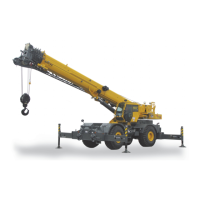
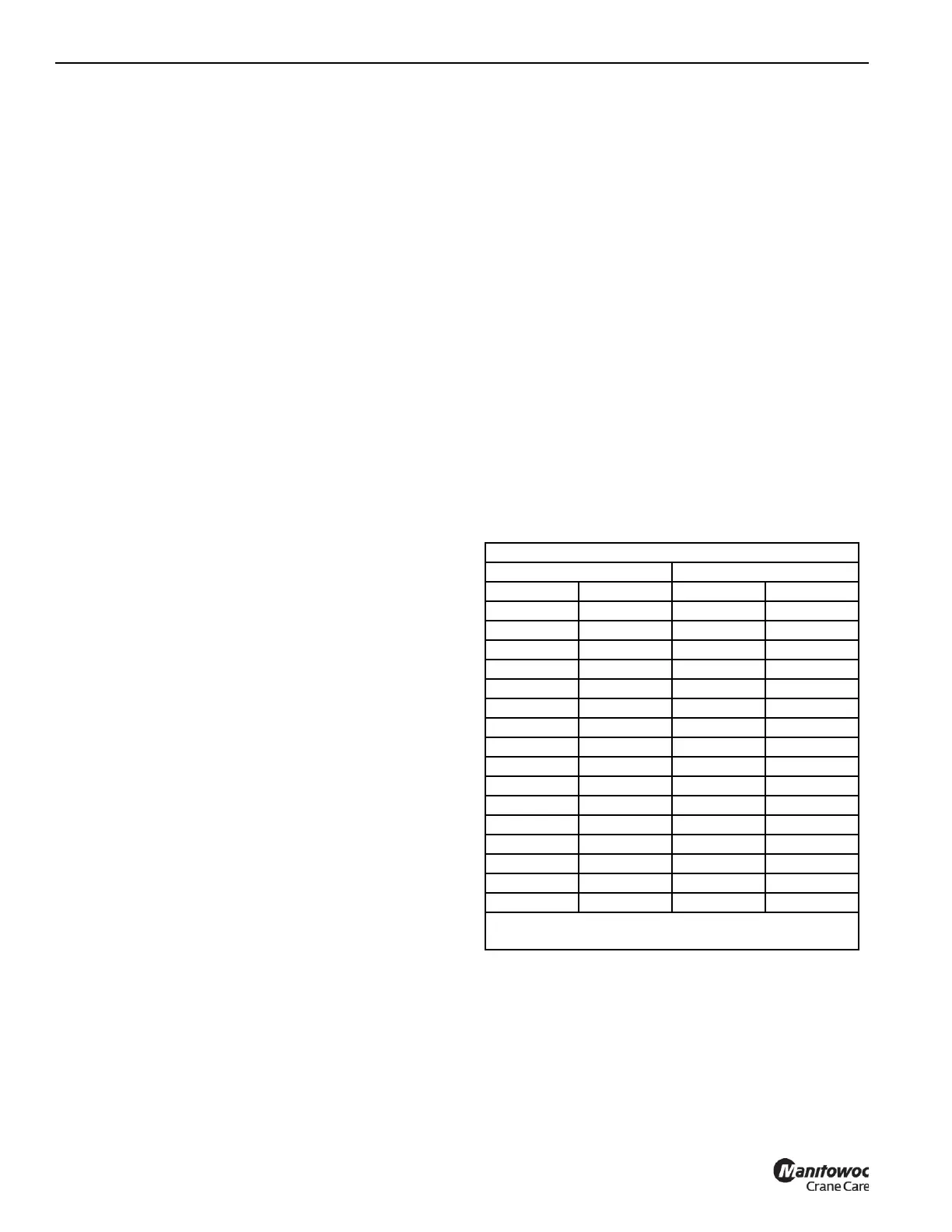